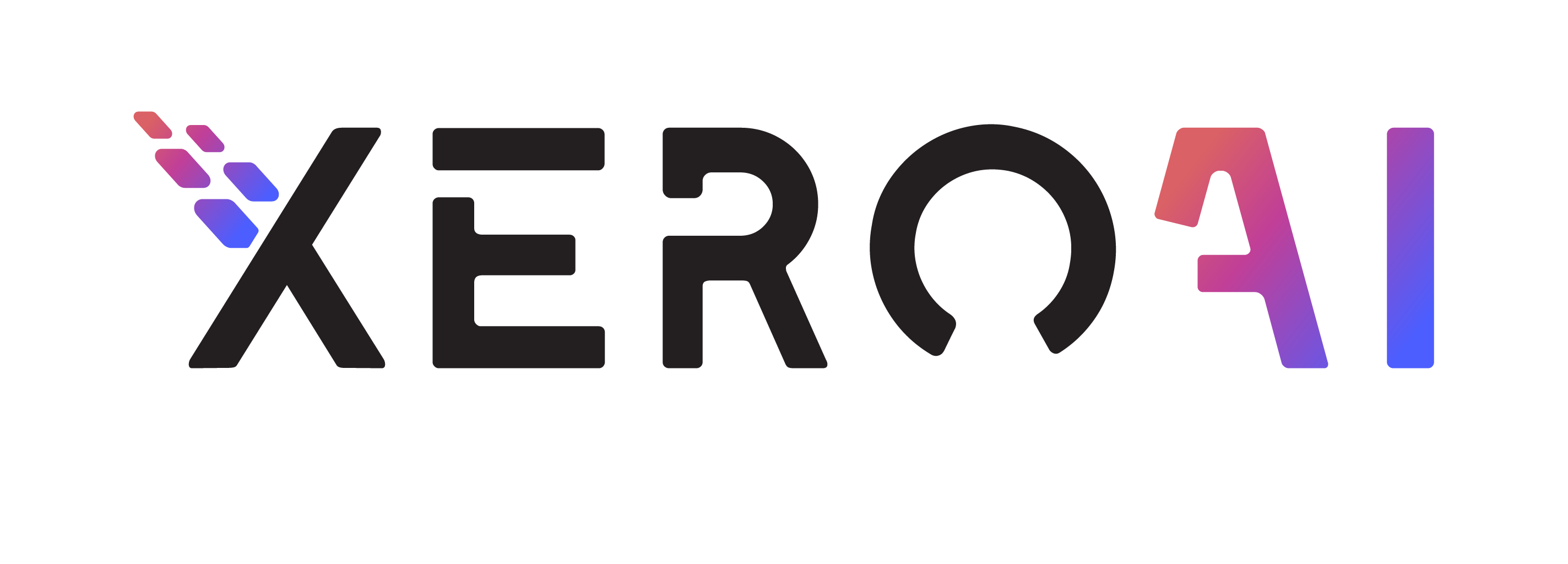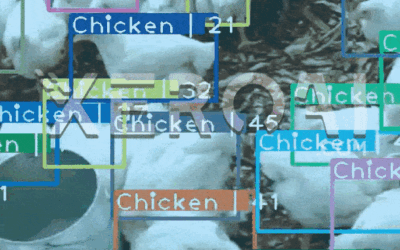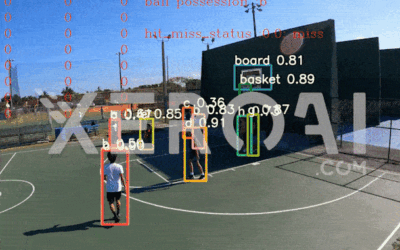The application of computer vision and deep learning in livestock management has revolutionized the way farmers and animal caretakers monitor and assess the health, behavior, and well-being of various livestock animals, including sheep, cows, goats, camels, and more. This technology-driven approach offers several advantages for animal farming, ranging from early disease detection to improved productivity. Here are various aspects and applications of camera-based computer vision and deep learning in animal livestock management:
1. AI in Livestock monitoring and management
Animal livestock monitoring and management have greatly benefited from the integration of AI, computer vision, and deep learning technologies. These advanced techniques have revolutionized the way farms and ranches handle their livestock, providing more efficient and humane management practices. Here are some notable use cases for AI in animal livestock monitoring and management:
1.1. Health Monitoring:
AI-based computer vision systems can continuously monitor the health of individual animals within a herd or flock. This includes identifying signs of illness, injury, or distress, such as lameness, skin conditions, or abnormal behavior. Early detection of health issues allows for prompt intervention and treatment, improving animal welfare and reducing losses.
1.2. Feed Optimization:
Deep learning algorithms can analyze the feeding habits and nutritional needs of animals. By monitoring feed consumption and weight gain, AI systems can adjust feeding schedules and diets to ensure that animals receive the right amount of nutrition, reducing feed wastage and optimizing growth rates.
1.3. Reproductive Management:
AI-powered computer vision can assist in estrus detection and pregnancy monitoring. By analyzing the behavior, posture, and movement patterns of livestock, AI systems can predict the optimal time for artificial insemination or natural mating, improving breeding efficiency and the overall genetic quality of the herd.
1.4. Livestock Tracking and Identification:
Computer vision and machine learning can be used to track and identify individual animals within a large group. This is especially useful for large-scale farming operations. It helps in tracking an animal’s movement, monitoring its growth and health, and ensuring that the right animal is subjected to specific treatments or vaccinations.
1.5. Environmental Monitoring:
AI systems can be employed to monitor environmental conditions within animal housing facilities. Sensors, cameras, and other data sources can be used to track temperature, humidity, air quality, and lighting. This ensures that animals are raised in optimal conditions, which, in turn, improves their health and productivity.
1.6. Behavioral Analysis:
Deep learning models can be trained to analyze the behavior of livestock. For example, they can detect signs of stress, aggression, or discomfort in animals, enabling early intervention to prevent conflicts or injuries among them.
1.7. Predictive Analytics:
AI and machine learning can process historical data to make predictions about livestock performance, disease outbreaks, or market trends. This helps farmers make informed decisions and manage their resources more effectively.
1.8. Disease Detection and Prevention:
Computer vision can help identify symptoms of diseases or parasites in livestock. AI systems can recognize patterns and anomalies in the appearance or behavior of animals, aiding in the early detection and containment of diseases, thereby reducing the need for extensive antibiotic use.
1.9. Robotic Livestock Management:
AI-powered robots can autonomously manage livestock, performing tasks such as feeding, cleaning, and health checks. These robots can be equipped with sensors and cameras for real-time data collection, improving the efficiency of livestock operations and reducing the labor-intensive tasks for farmers.
1.10. Livestock Inventory Management:
Deep learning models can count and categorize livestock accurately, which is crucial for record-keeping and complying with regulatory requirements.
2. Vision based Use Cases
Camera-based computer vision and deep learning solutions have opened up numerous possibilities for the monitoring and management of animal livestock, including individual and flock analysis for various species such as sheep, cows, goats, camels, and more. Here are several specific use cases for these technologies:
2.1. Animal Counting in Flocks:
Computer vision models can accurately count the number of animals within a flock, making it easier for farmers to ensure all animals are accounted for.
2.2. Eating or Non-eating Detection:
By analyzing video feeds, deep learning algorithms can detect whether individual animals are actively eating or not. This helps monitor feed consumption and identifies potential health issues.
2.3. Illness Detection in Animal:
Computer vision can detect abnormal behavior, such as lameness or unusual posture, which may indicate illness. This early detection allows for timely intervention and minimizes the spread of diseases within the herd.
2.4. Presence of Water Detection:
Cameras can monitor water sources, and deep learning algorithms can analyze footage to ensure that animals have access to water. Lack of water can be a critical issue, especially in hot climates.
2.5. Child Delivery Detection:
By monitoring the behavior and movements of pregnant animals, computer vision can predict when an animal is about to give birth, allowing farmers to provide necessary assistance and care.
2.6. Health Monitoring from Movement:
Deep learning models can assess the movement patterns of animals to detect signs of distress or injury. Unusual gait or posture can be indicative of health problems.
2.7. Weight Monitoring:
By using cameras and computer vision, livestock weight can be estimated, which is important for growth tracking and nutrition management.
2.8. Reproductive Health:
Continuous monitoring can help in tracking the reproductive health of female animals. It can detect signs of estrus, identify optimal breeding times, and improve reproductive efficiency.
2.9. Behavioral Analysis:
Computer vision can identify aggressive behavior, stress, or other abnormal actions within the herd, helping to prevent conflicts and injuries.
2.10. Environmental Conditions:
Cameras can also monitor environmental conditions such as temperature, humidity, and lighting within the livestock area to ensure animals are in optimal living conditions.
2.11. Vaccination and Medication Management:
Computer vision can help ensure that the right animals receive the required vaccinations or medications by tracking individual animals.
2.12. Livestock Tracking and Identification:
Individual identification and tracking of animals within a group is essential for record-keeping and managing each animal’s health and performance.
2.13. Disease Outbreak Detection:
Computer vision can identify early signs of disease outbreaks within the herd by monitoring the behavior and appearance of animals. This allows for prompt isolation and treatment.
2.14. Quality Assurance:
Computer vision can assess the physical condition and overall quality of livestock, which is crucial for determining their value in the market.
2.15. Livestock Security:
Cameras can help deter theft and protect the livestock by monitoring the surroundings and alerting farmers to potential threats.
2.16. Market-Ready Assessment:
Computer vision can assess when an animal is ready for market based on weight, health, and age, optimizing the timing for sales.
3. Conclusion
The integration of AI, computer vision, and deep learning technologies into animal livestock management has ushered in a new era of precision and efficiency in farming. These advanced systems offer a multitude of benefits, ranging from enhanced animal welfare to increased productivity and sustainability in the agricultural sector.With the ability to monitor individual and flock behavior, detect health issues early, optimize feeding schedules, and track environmental conditions, farmers and ranchers can make more informed decisions and take proactive measures to ensure the well-being of their livestock. This not only contributes to improved animal health and quality of life but also reduces the environmental impact of farming practices.Moreover, these systems help optimize resource allocation, reduce waste, and enhance overall profitability. By accurately counting animals, tracking weight, and predicting optimal breeding times, farmers can achieve better results with fewer resources, making livestock farming more sustainable and economically viable.



